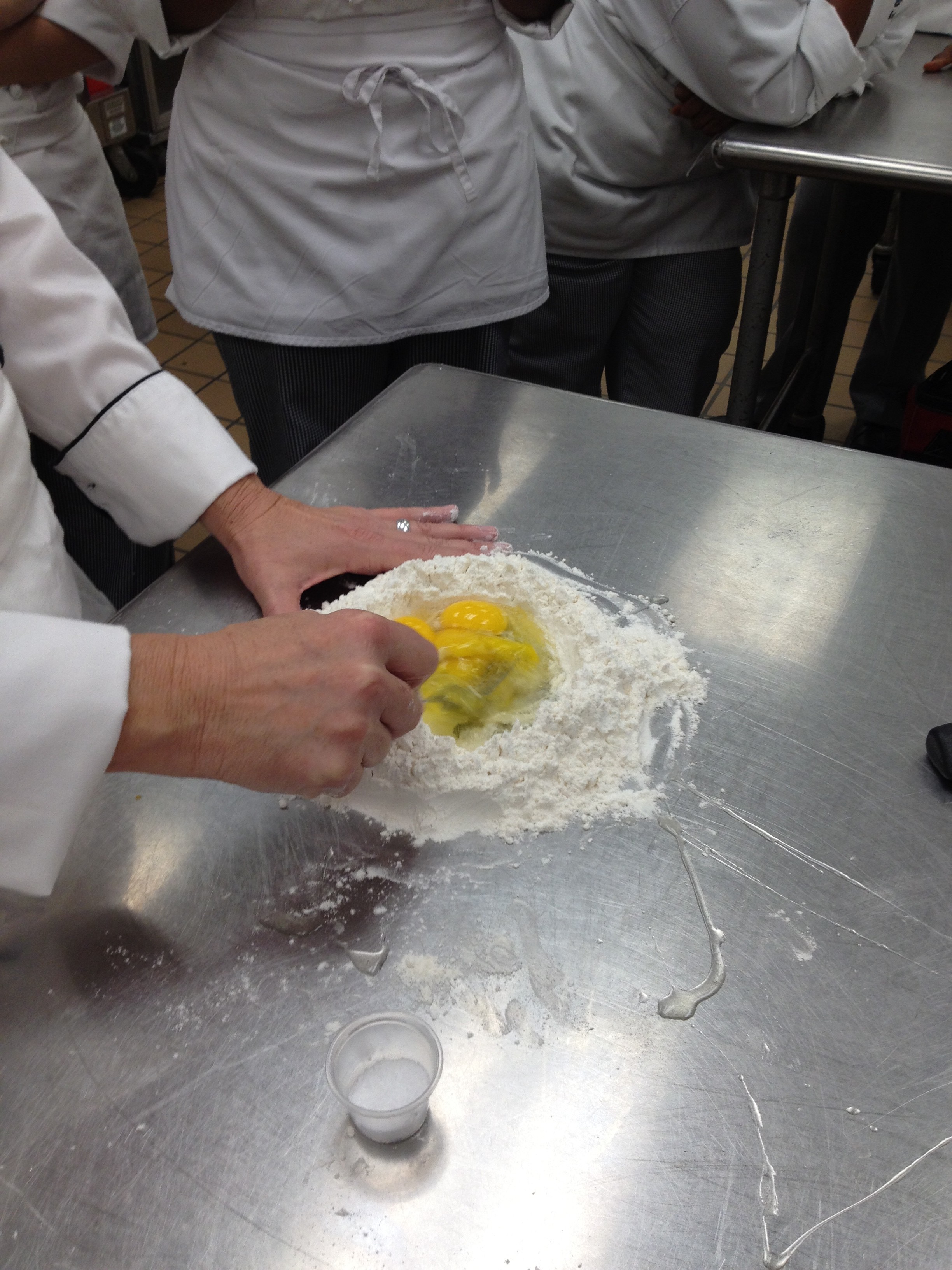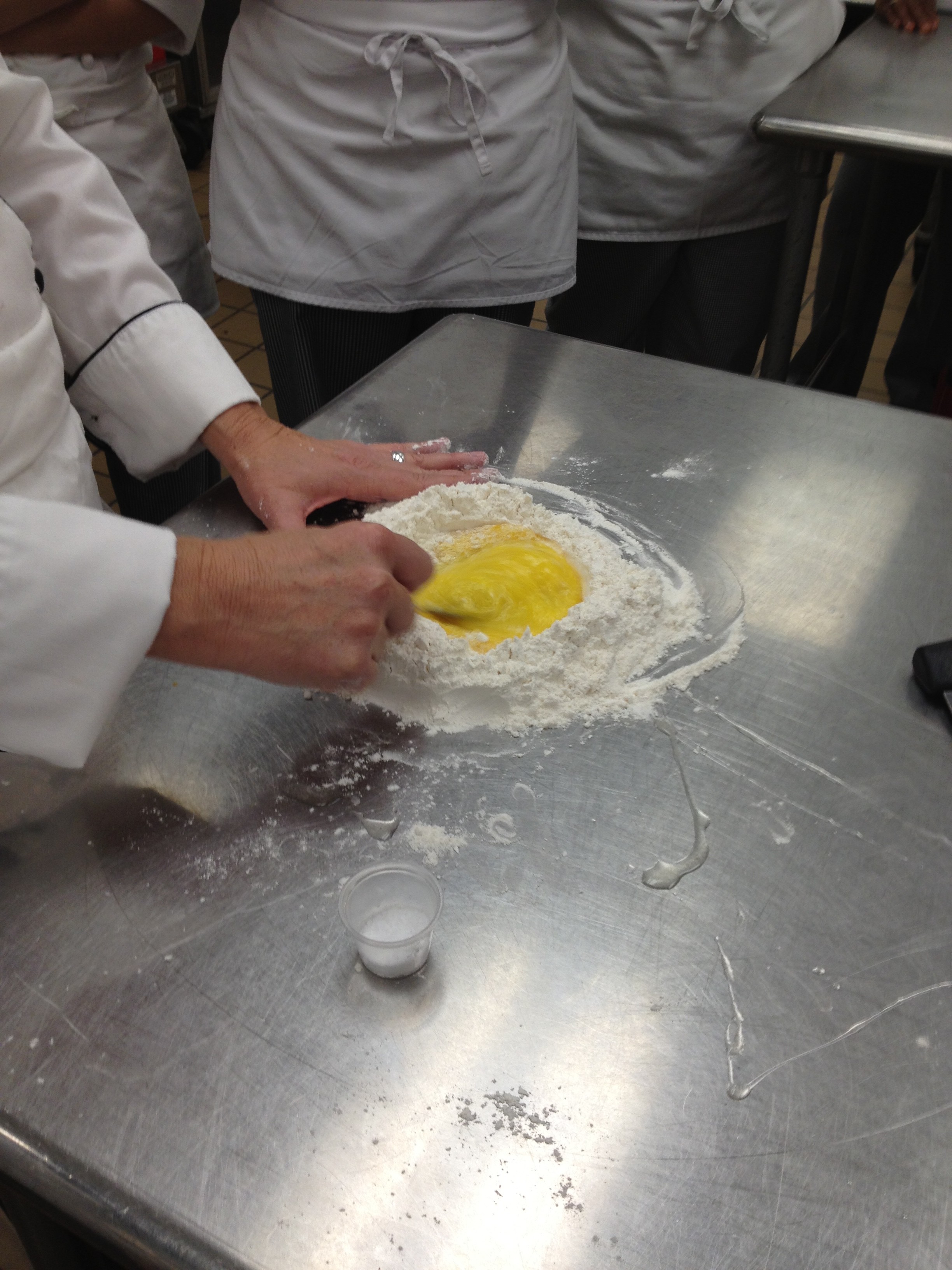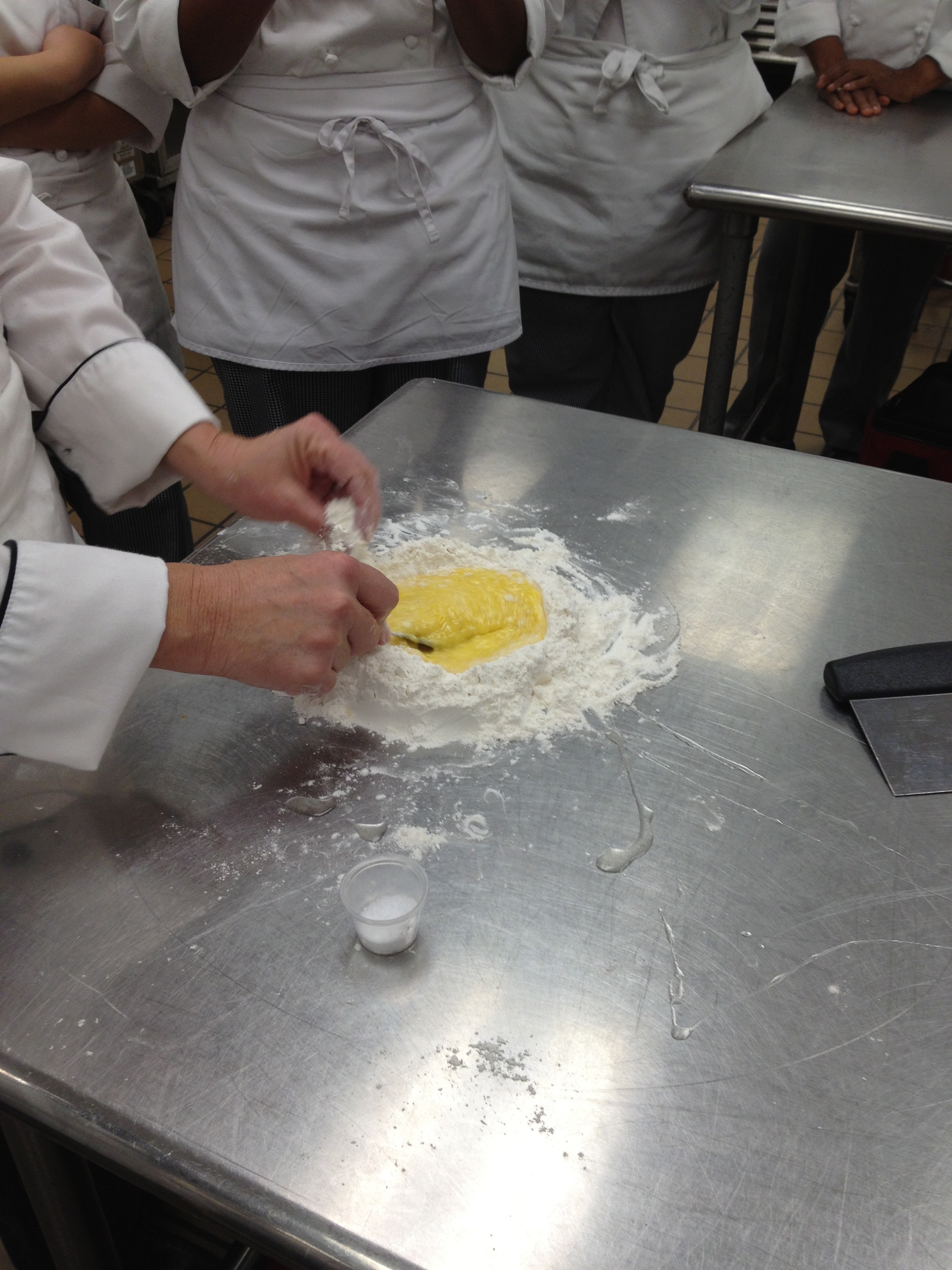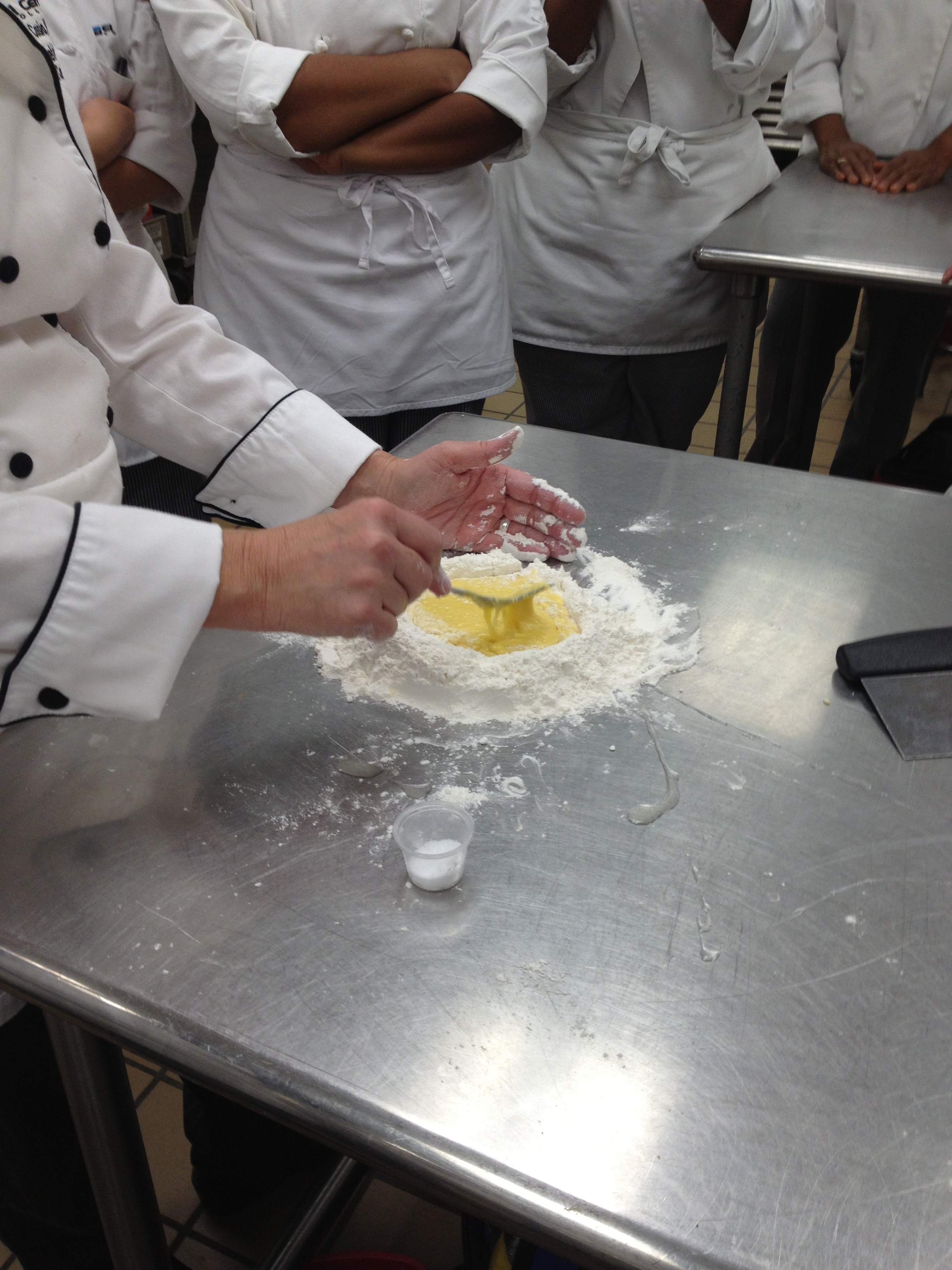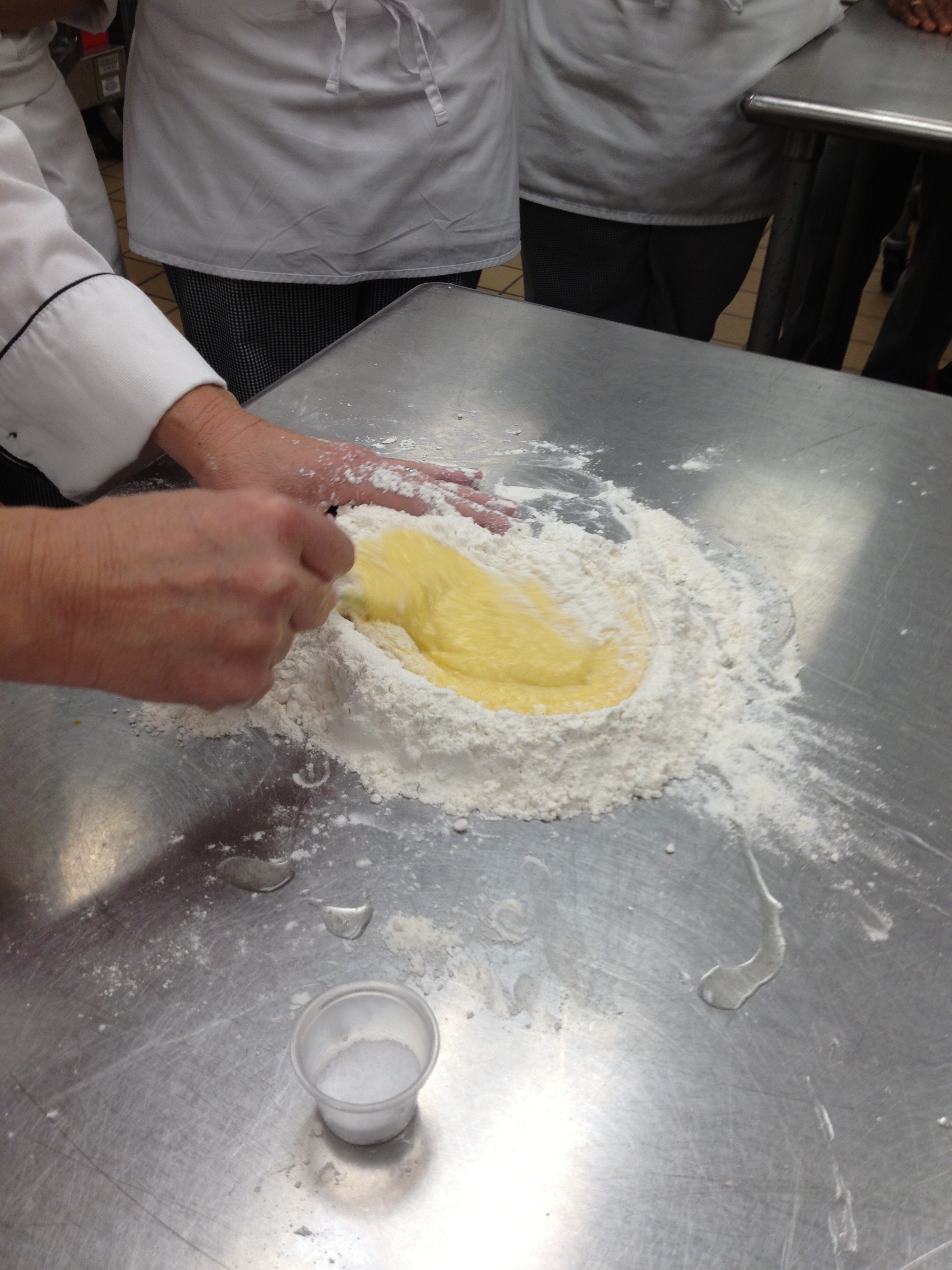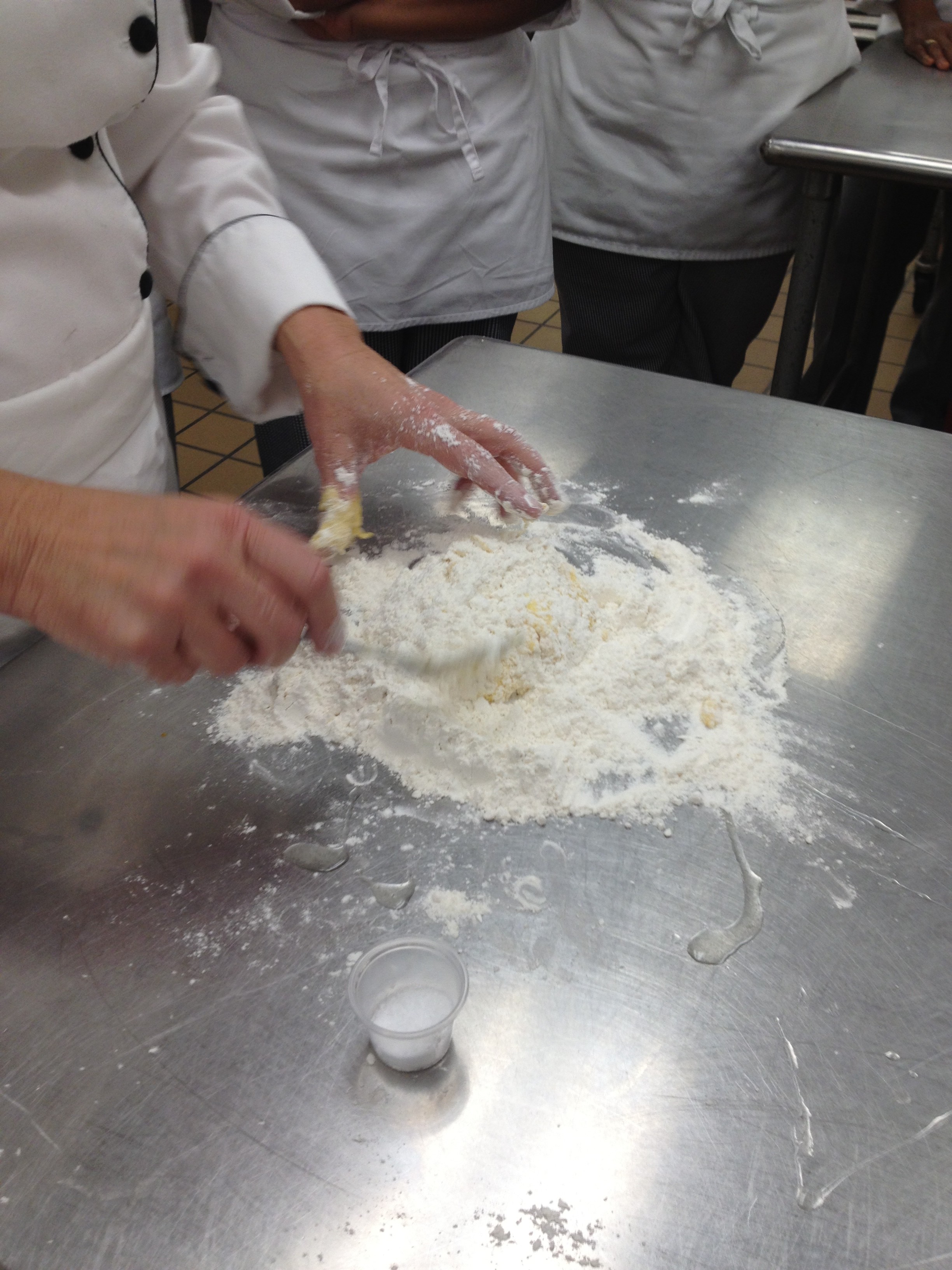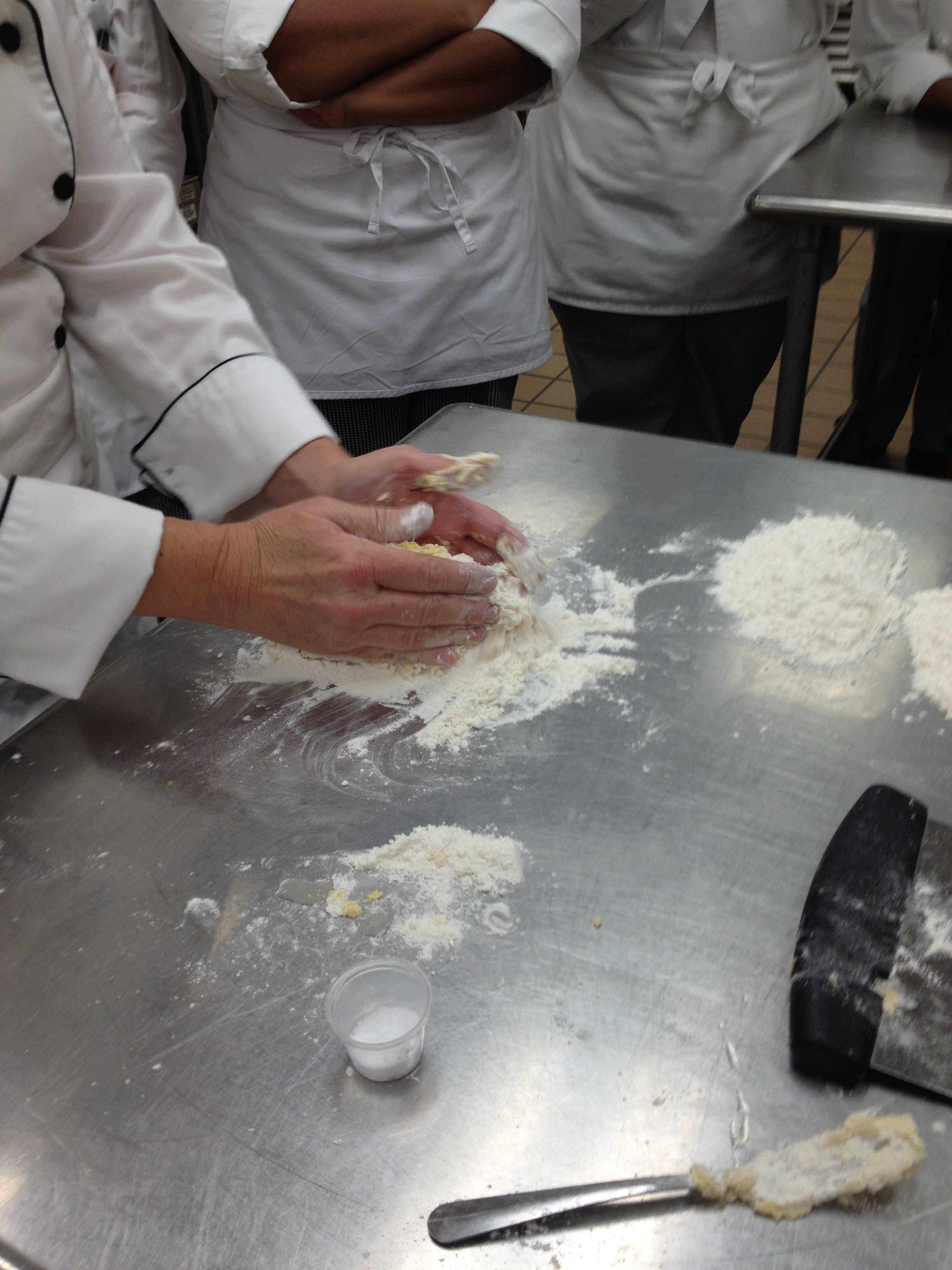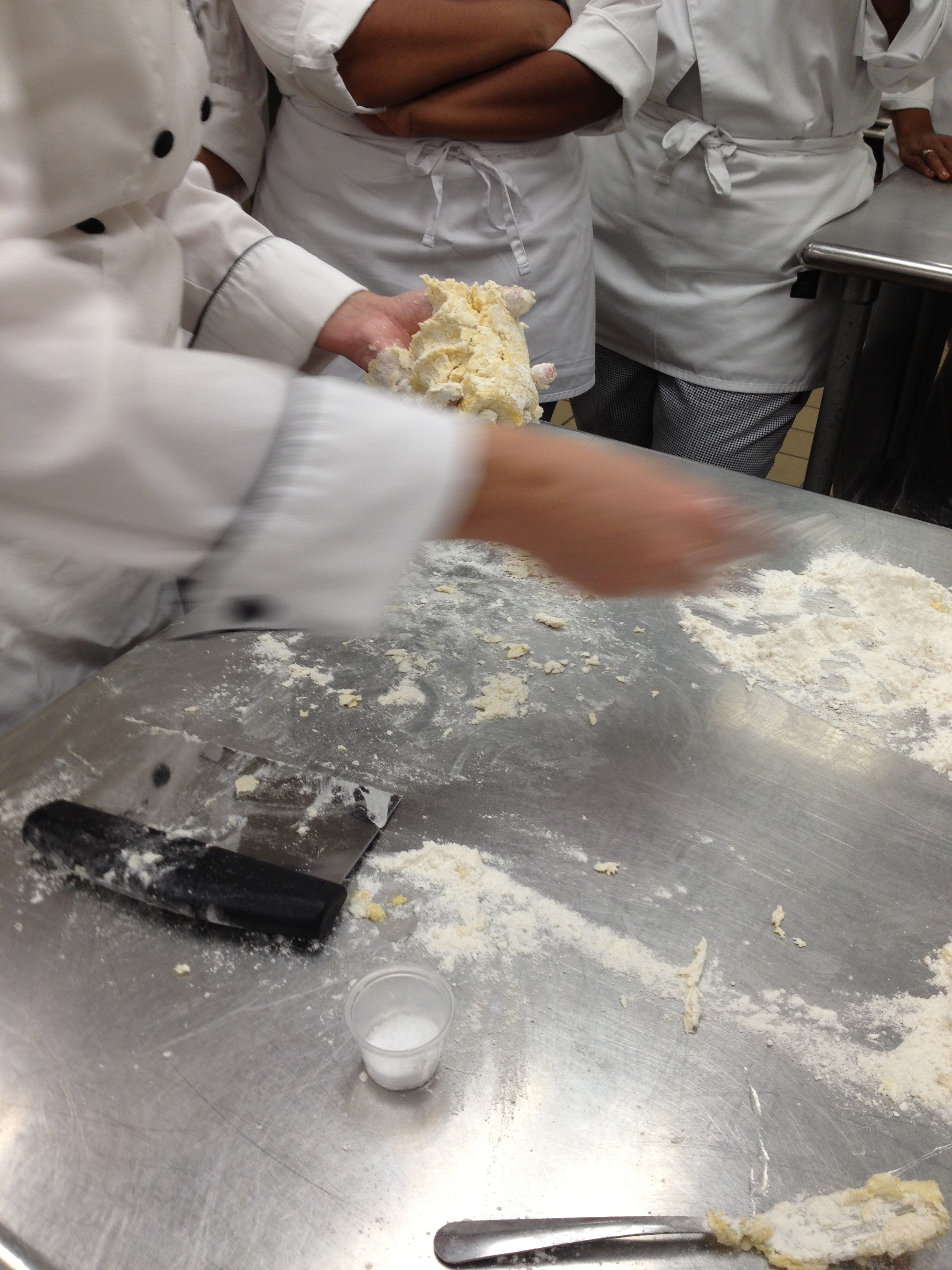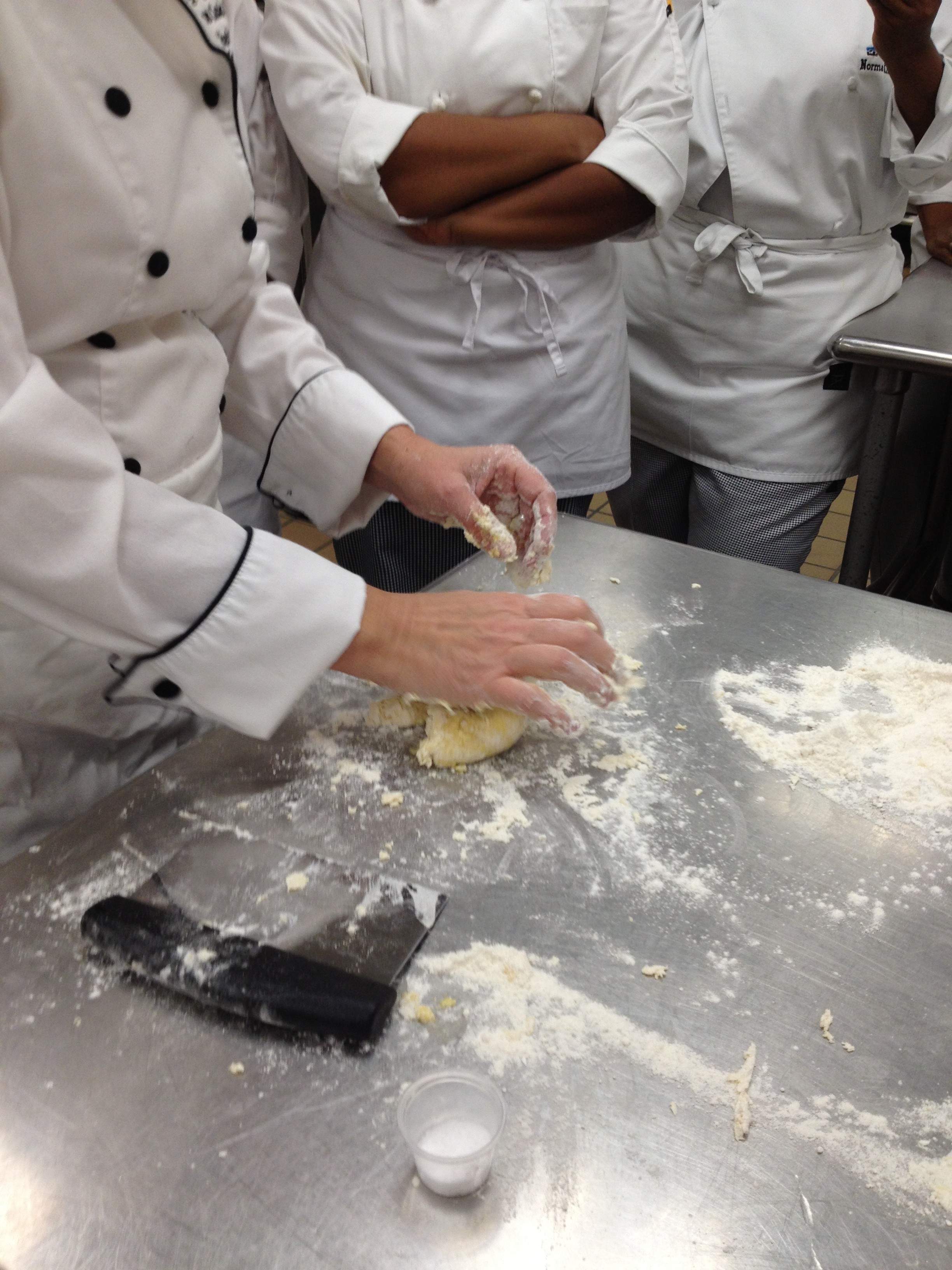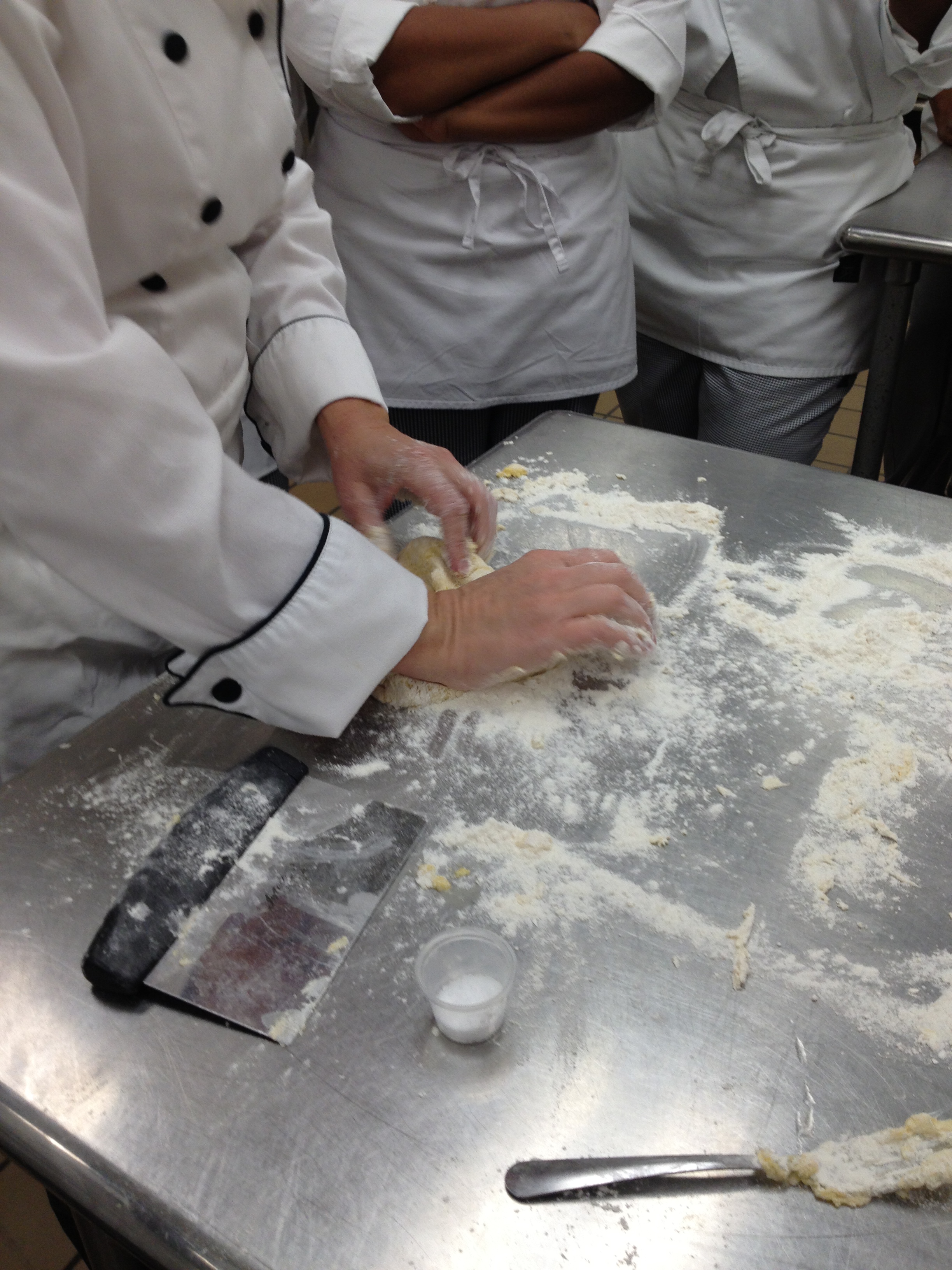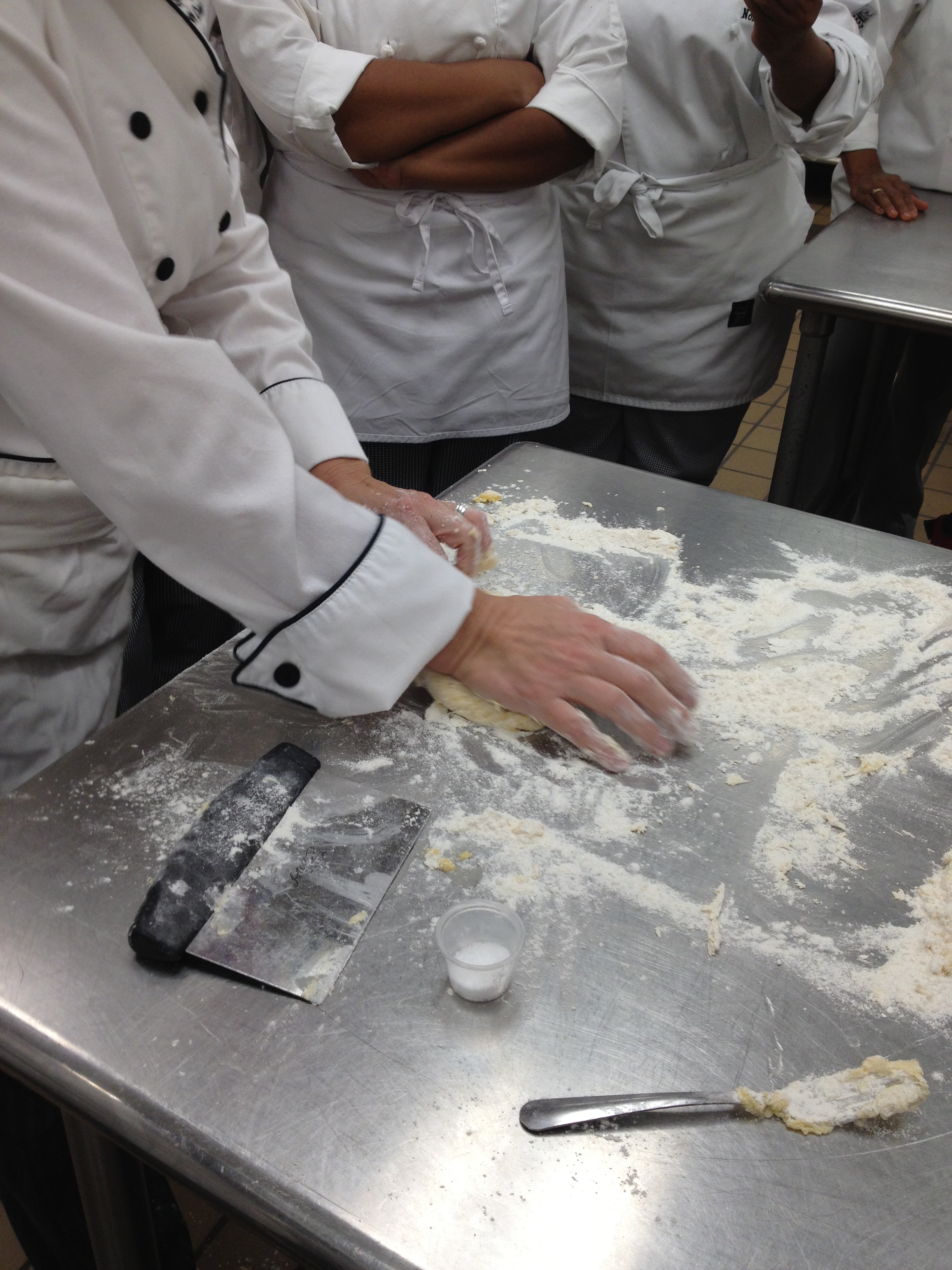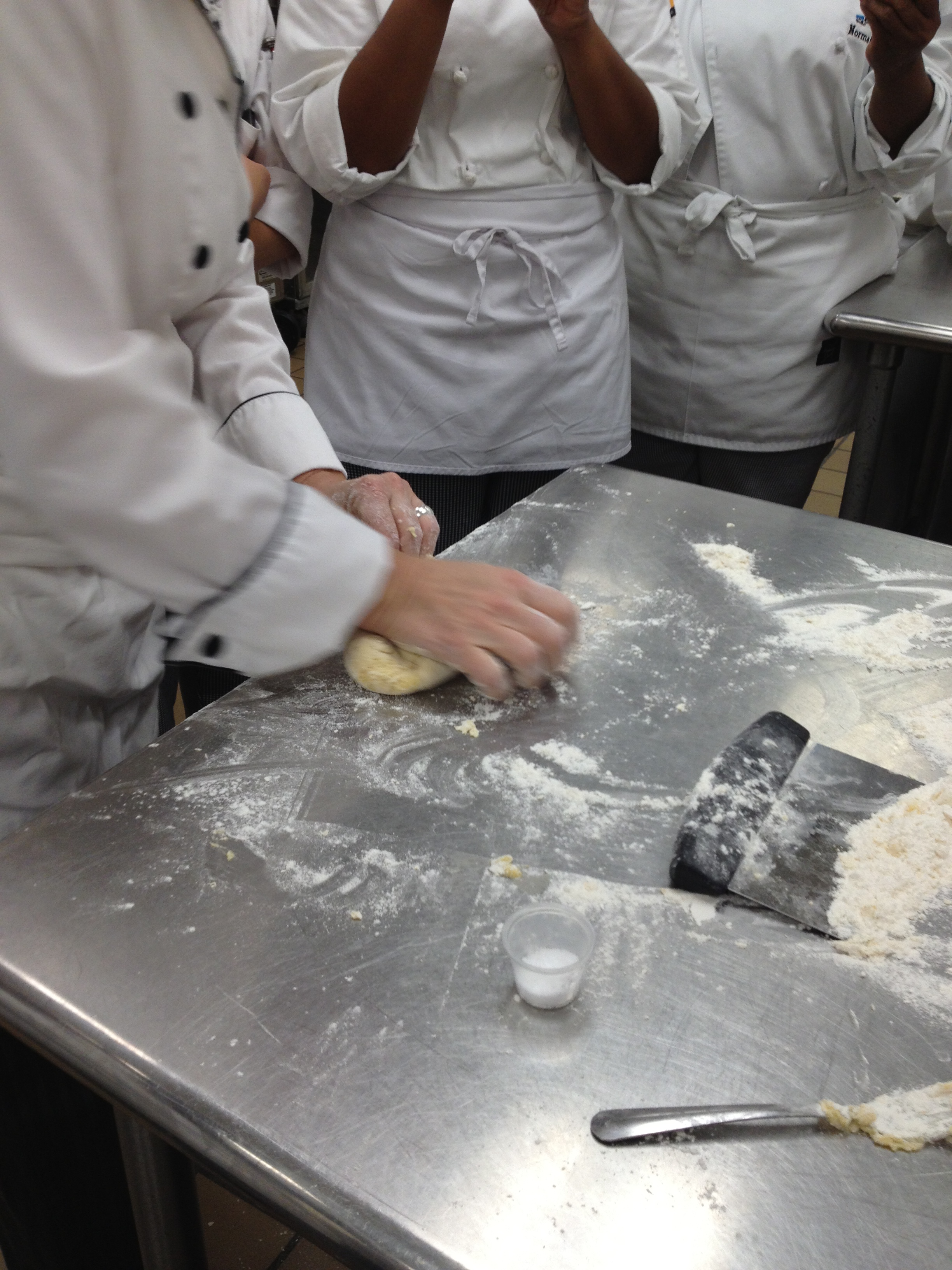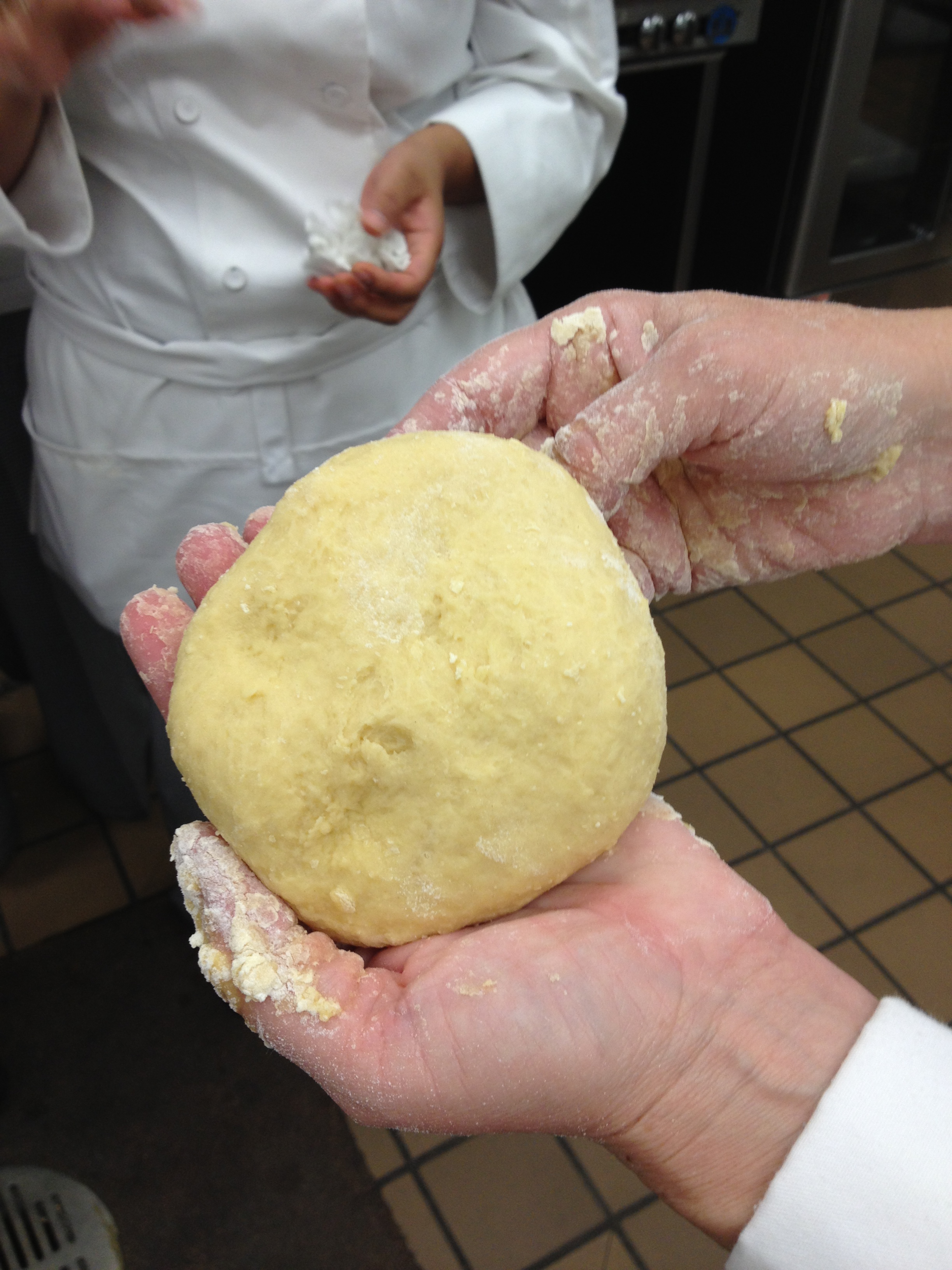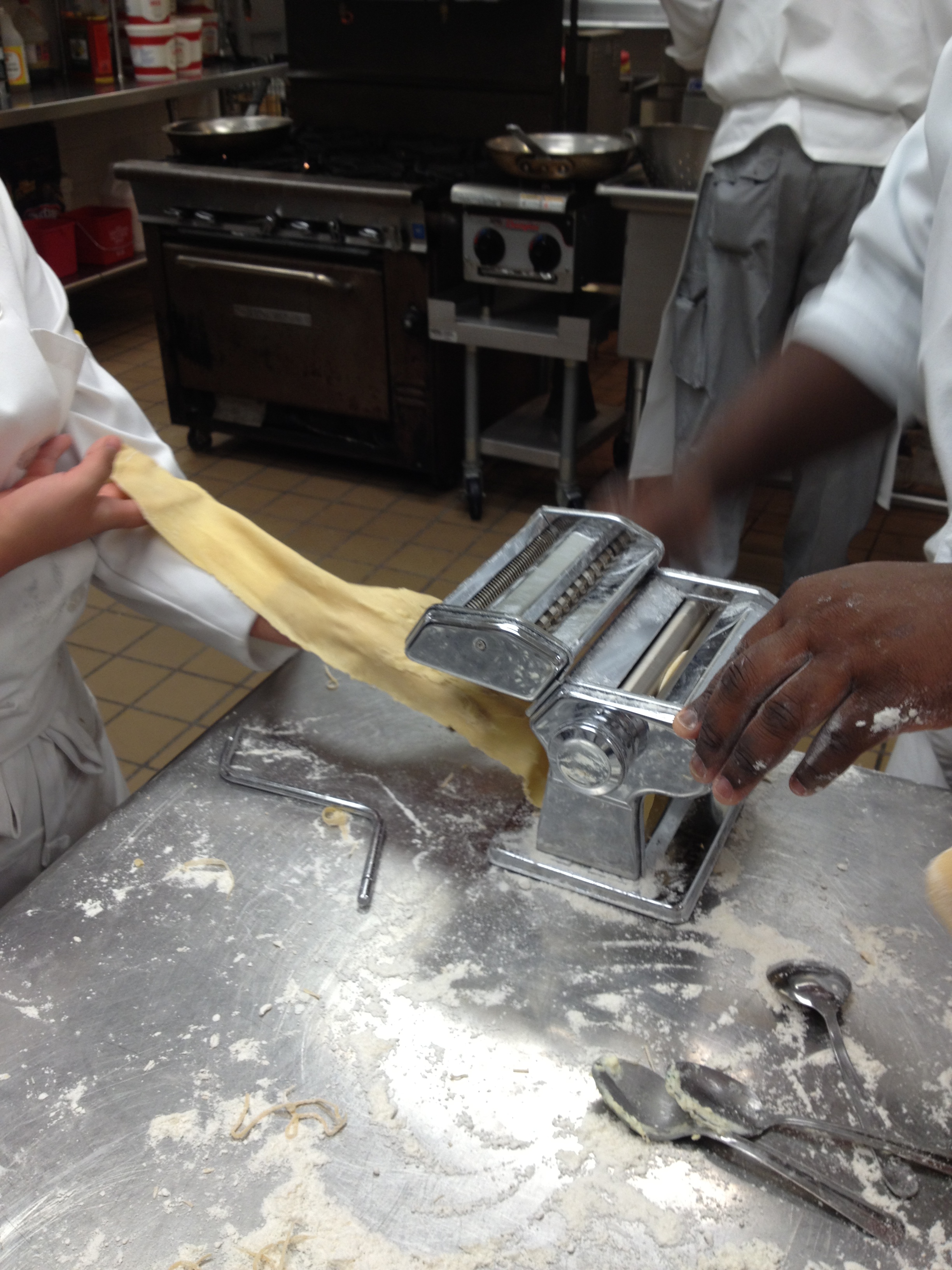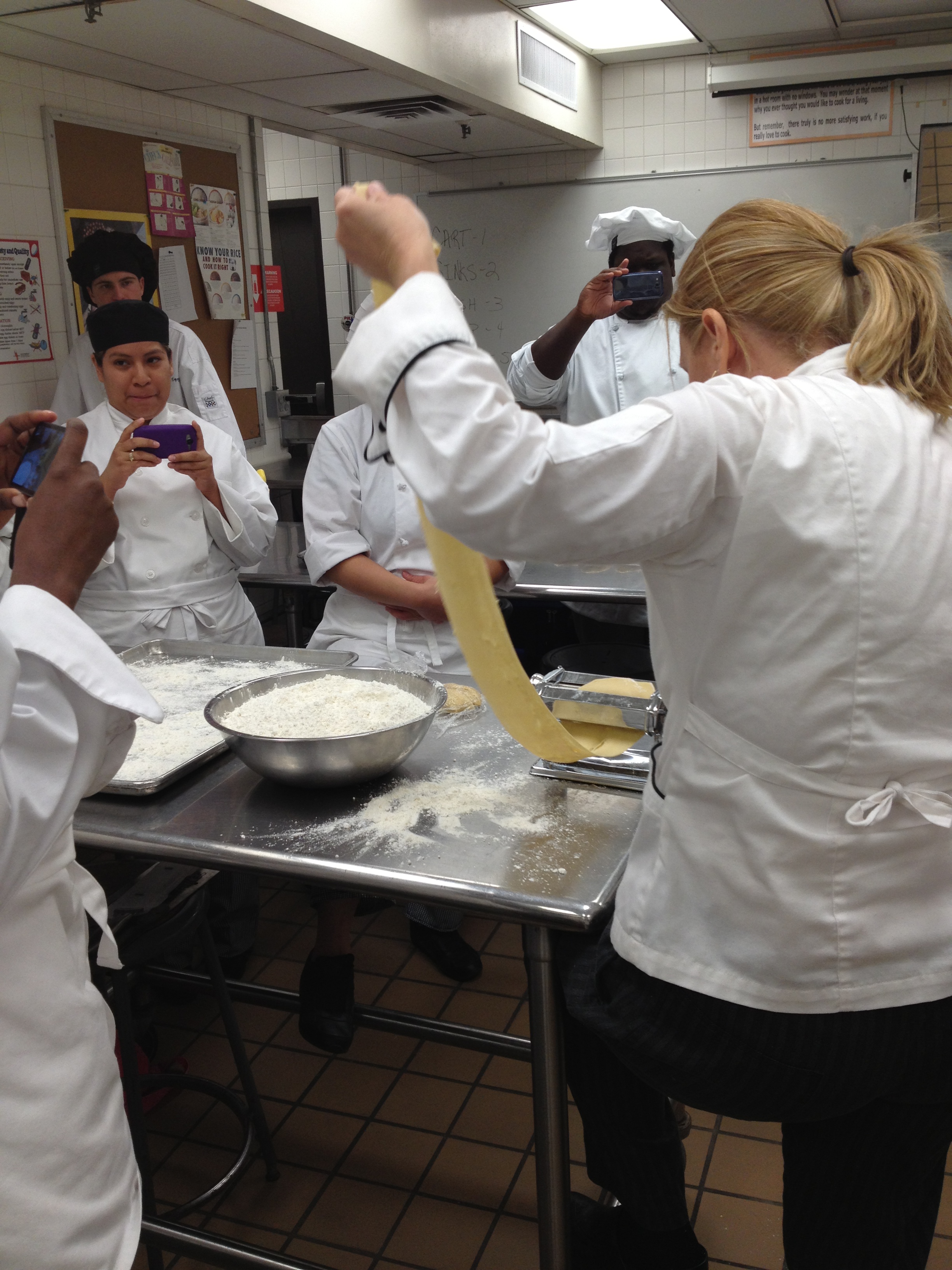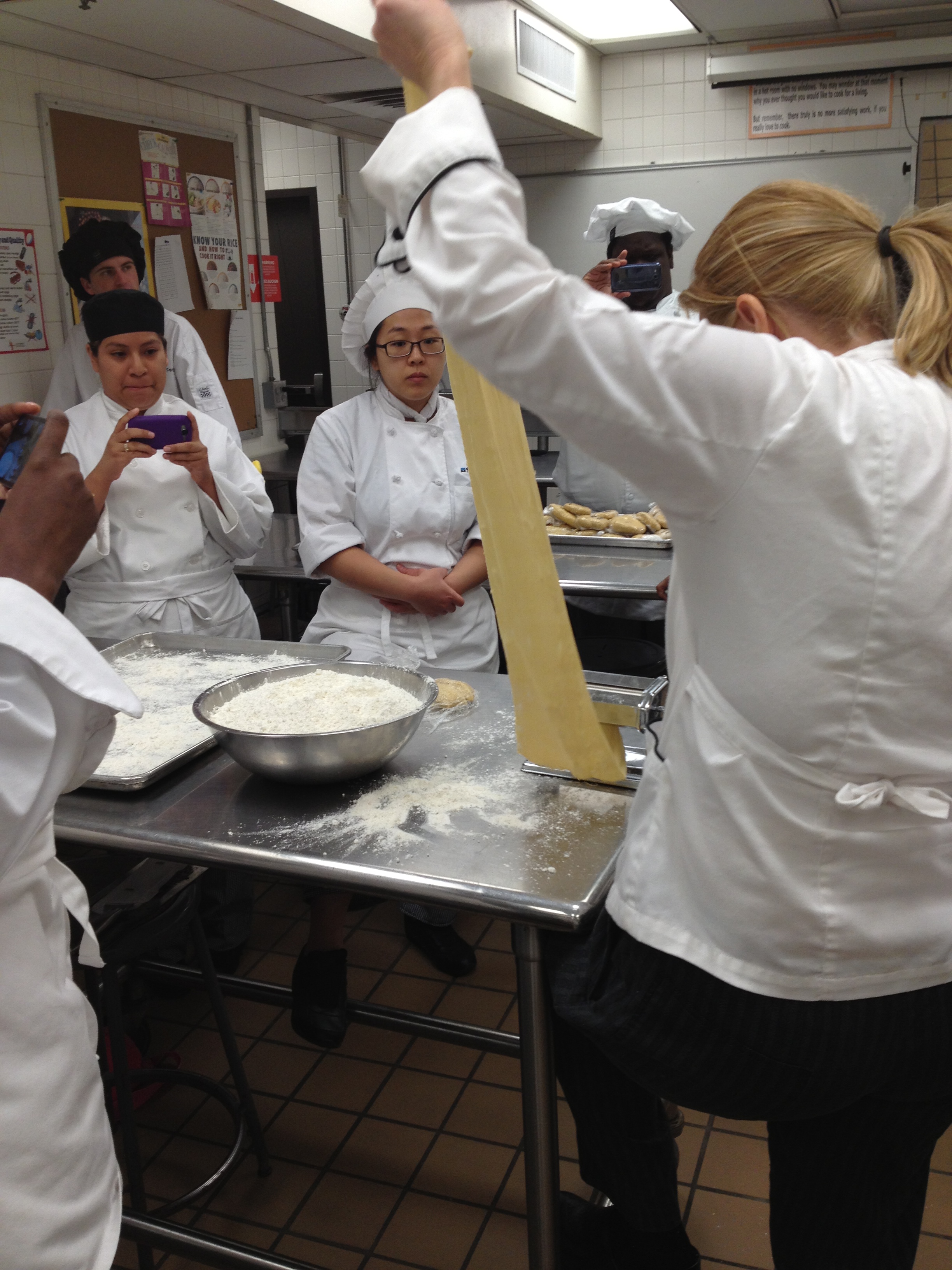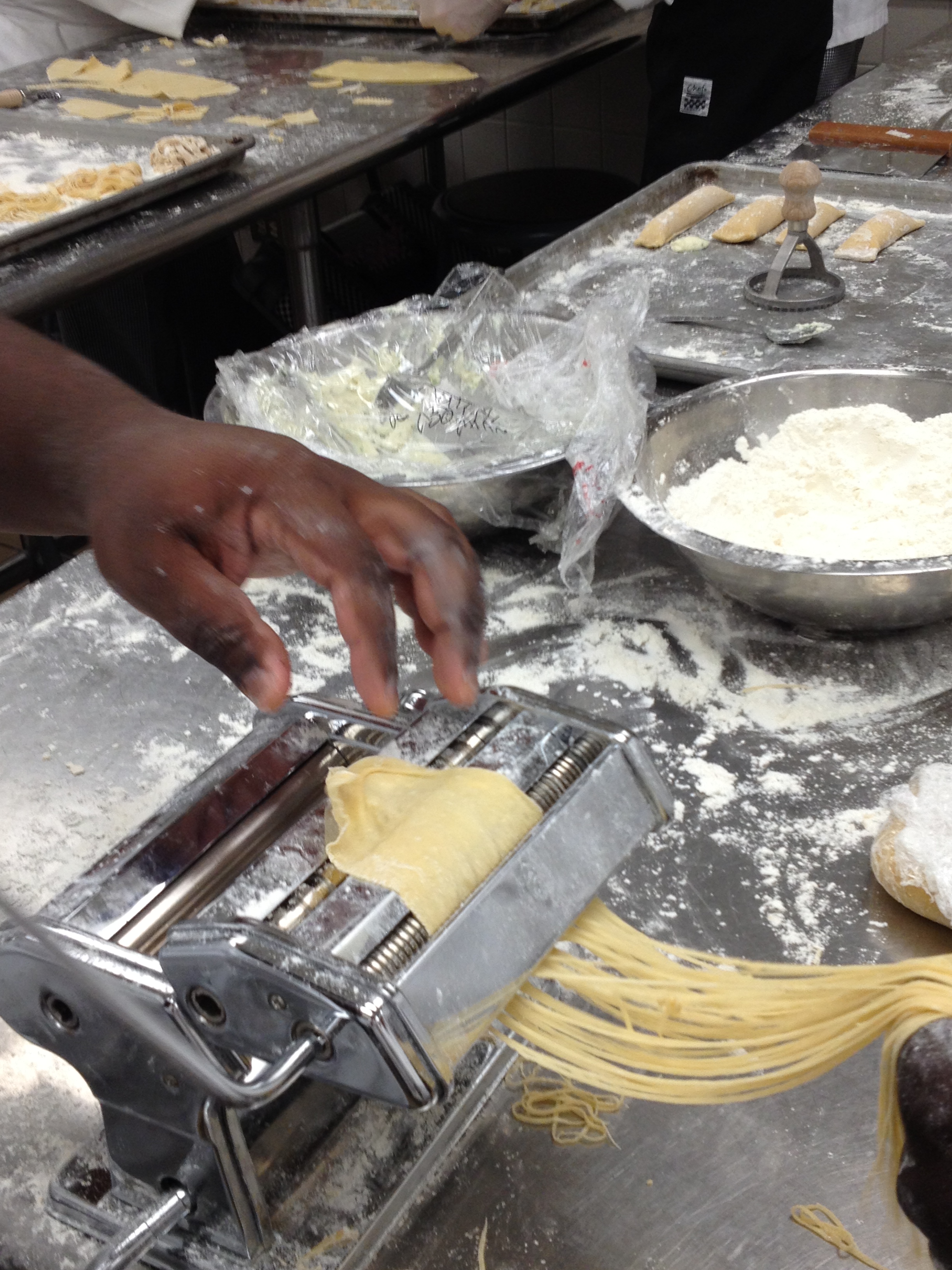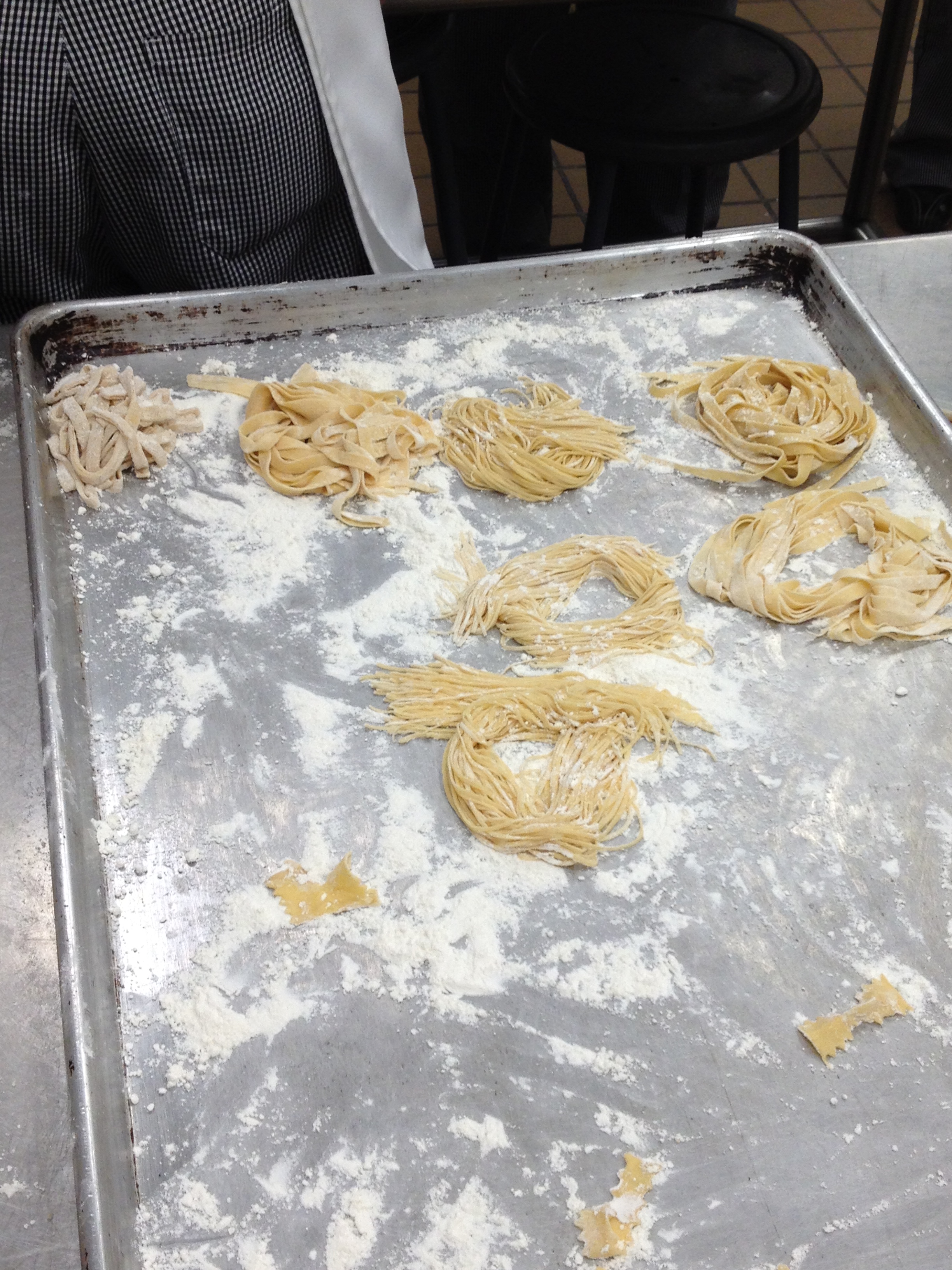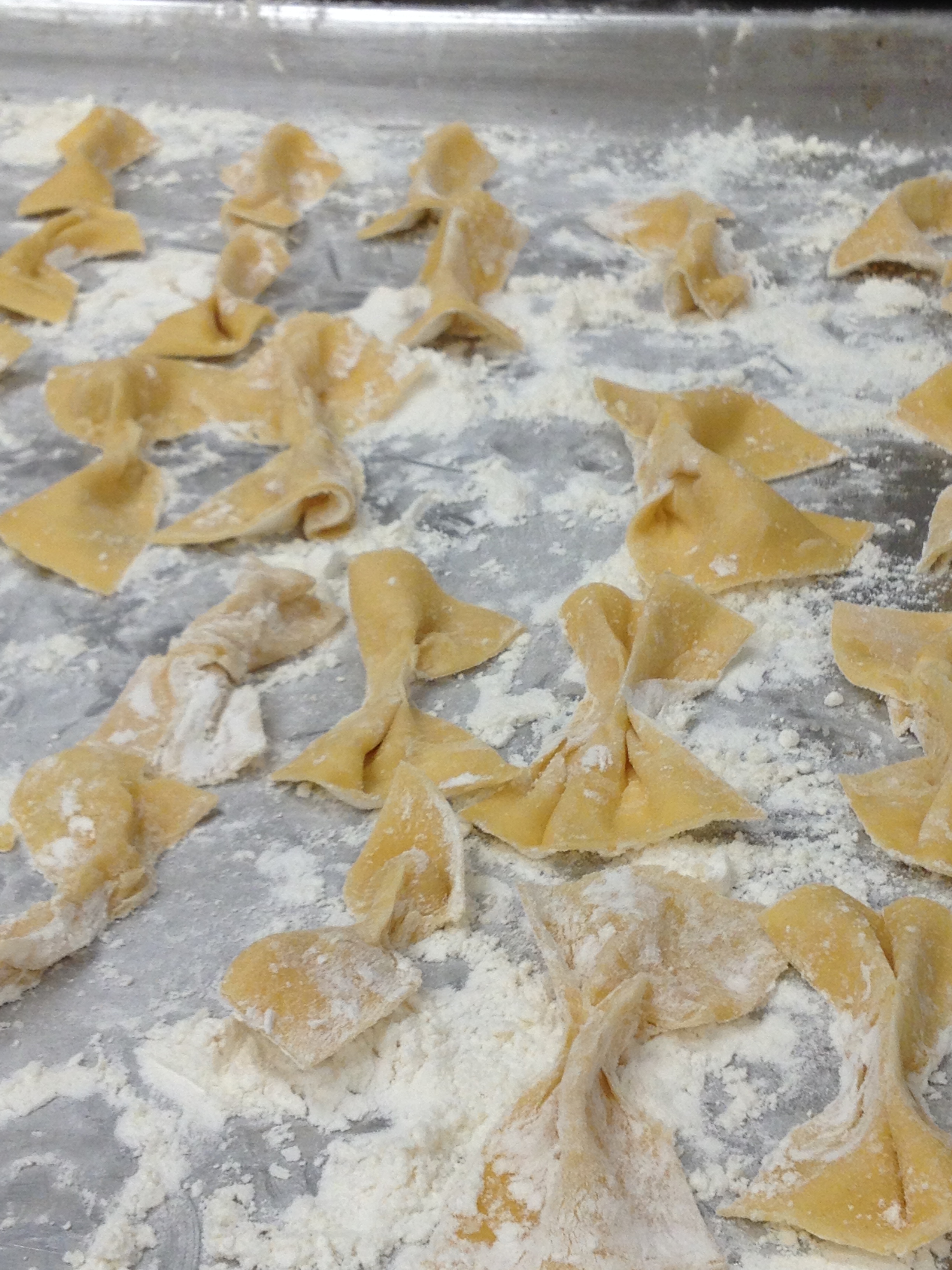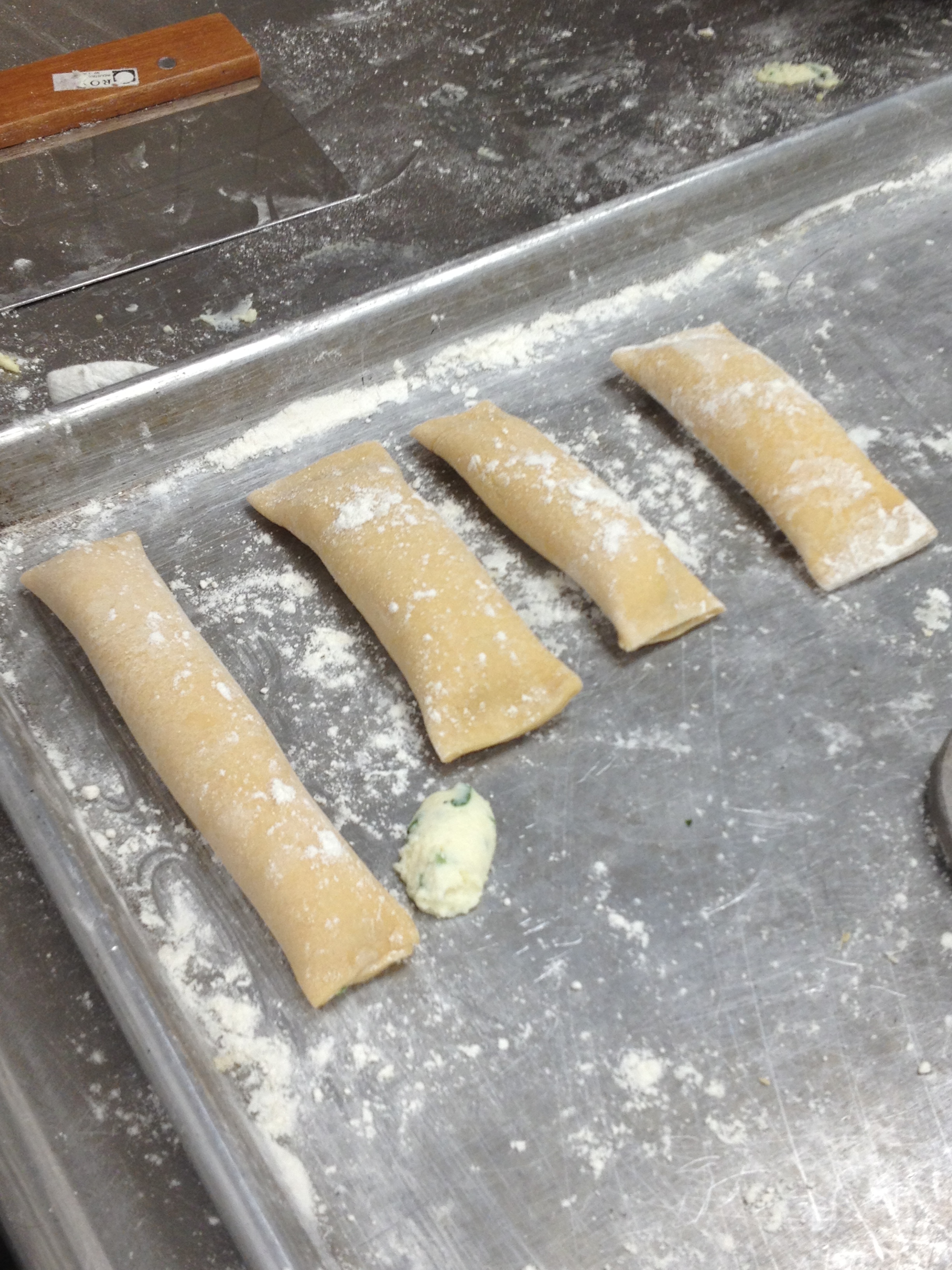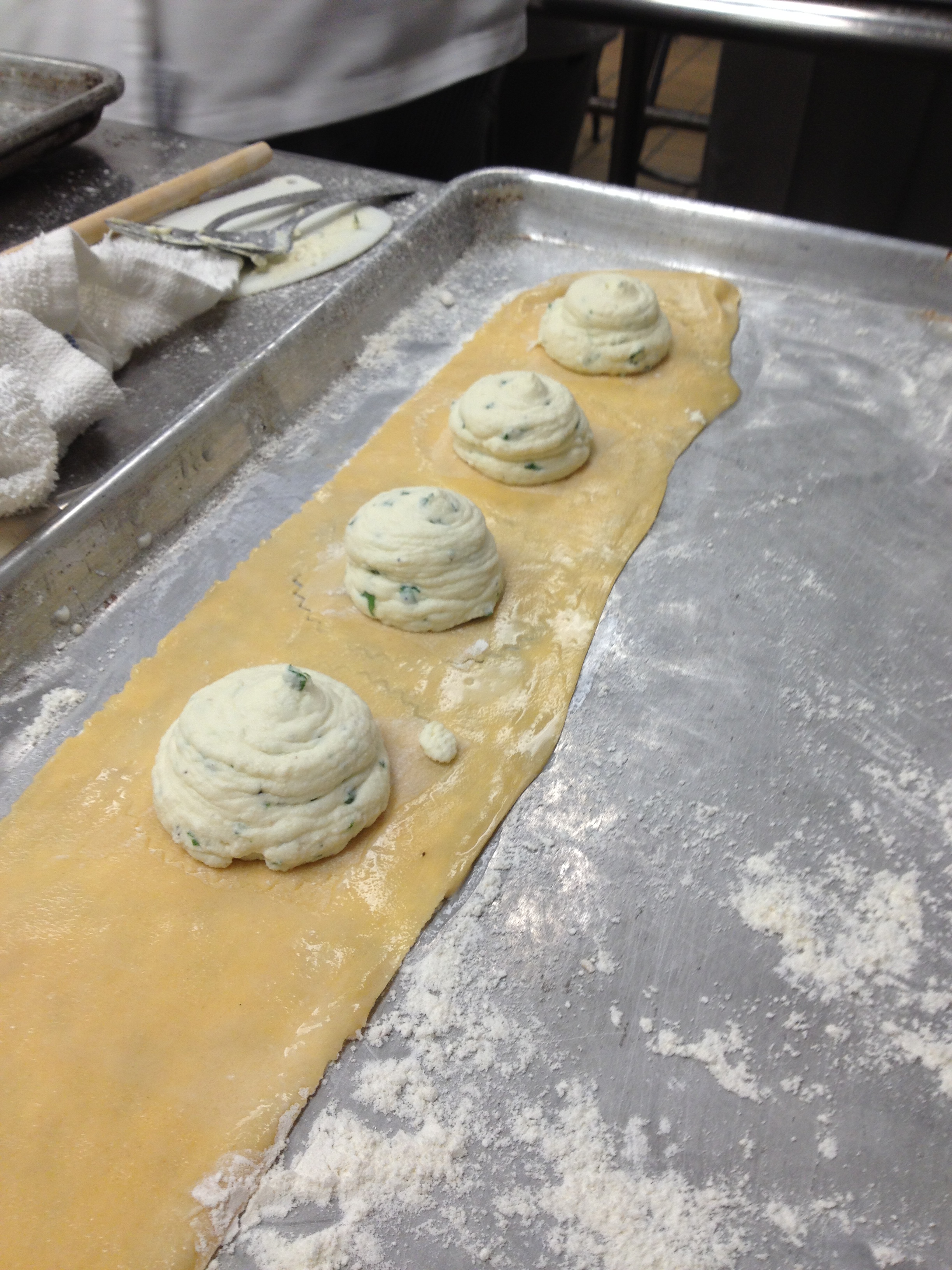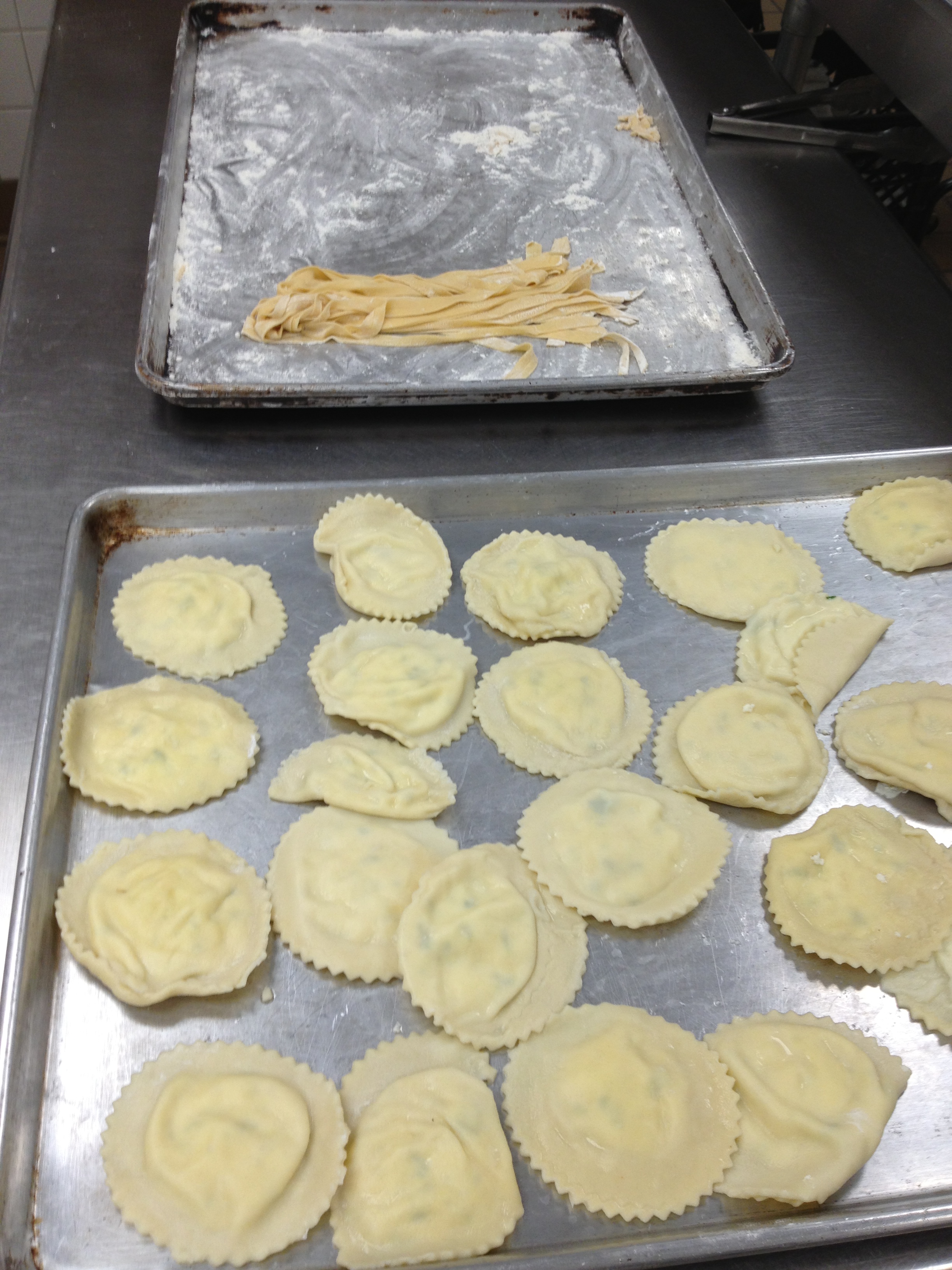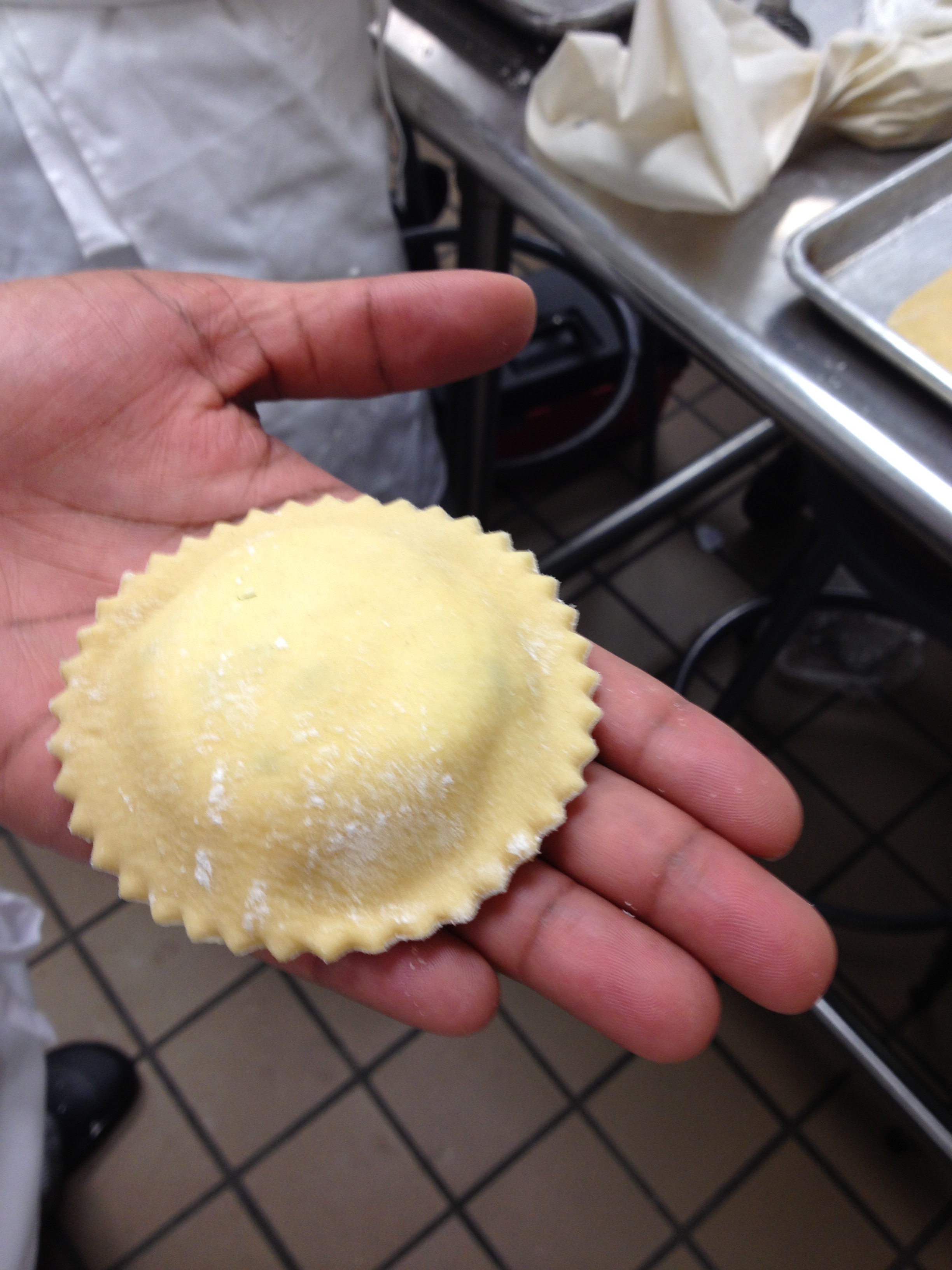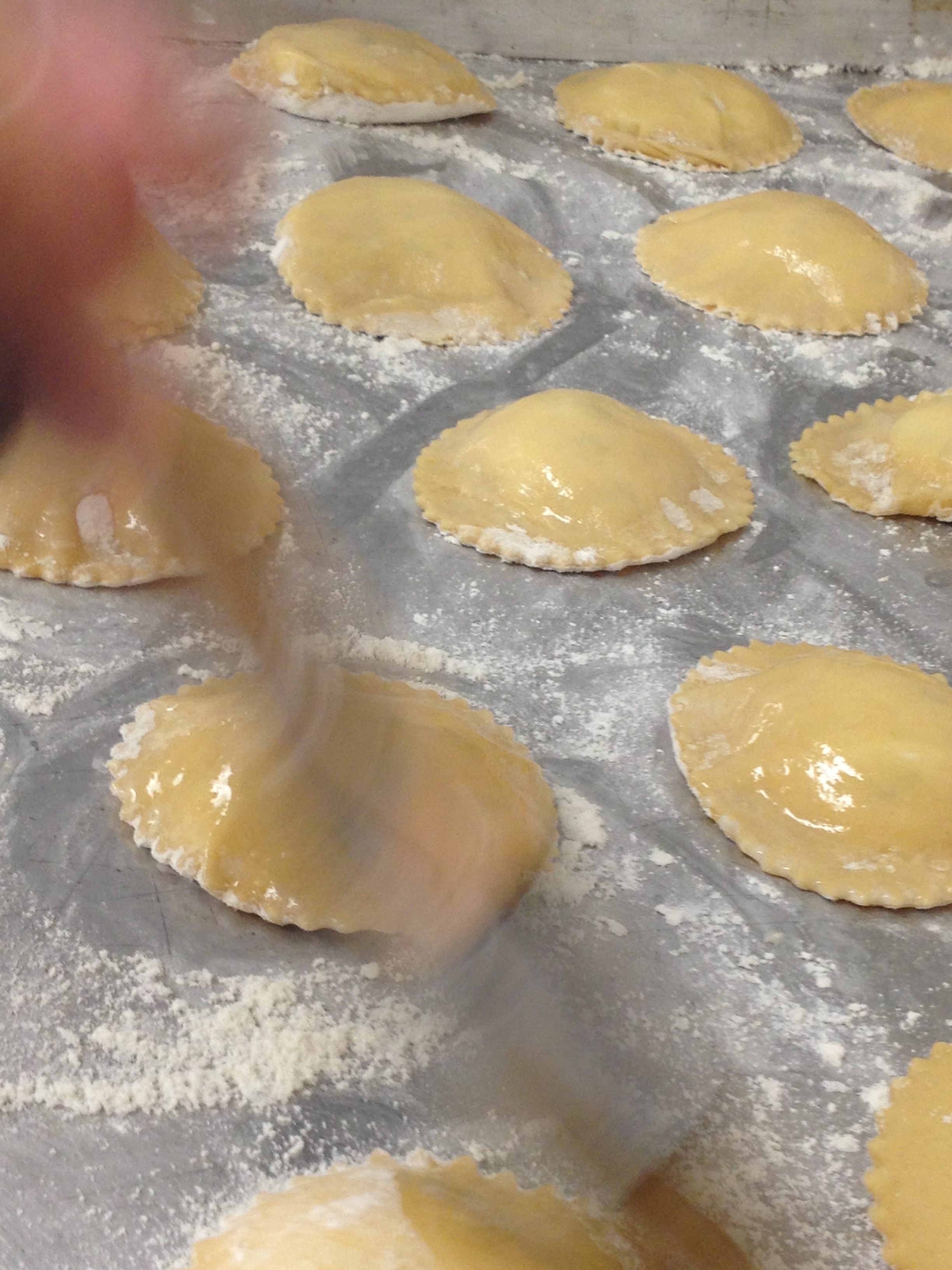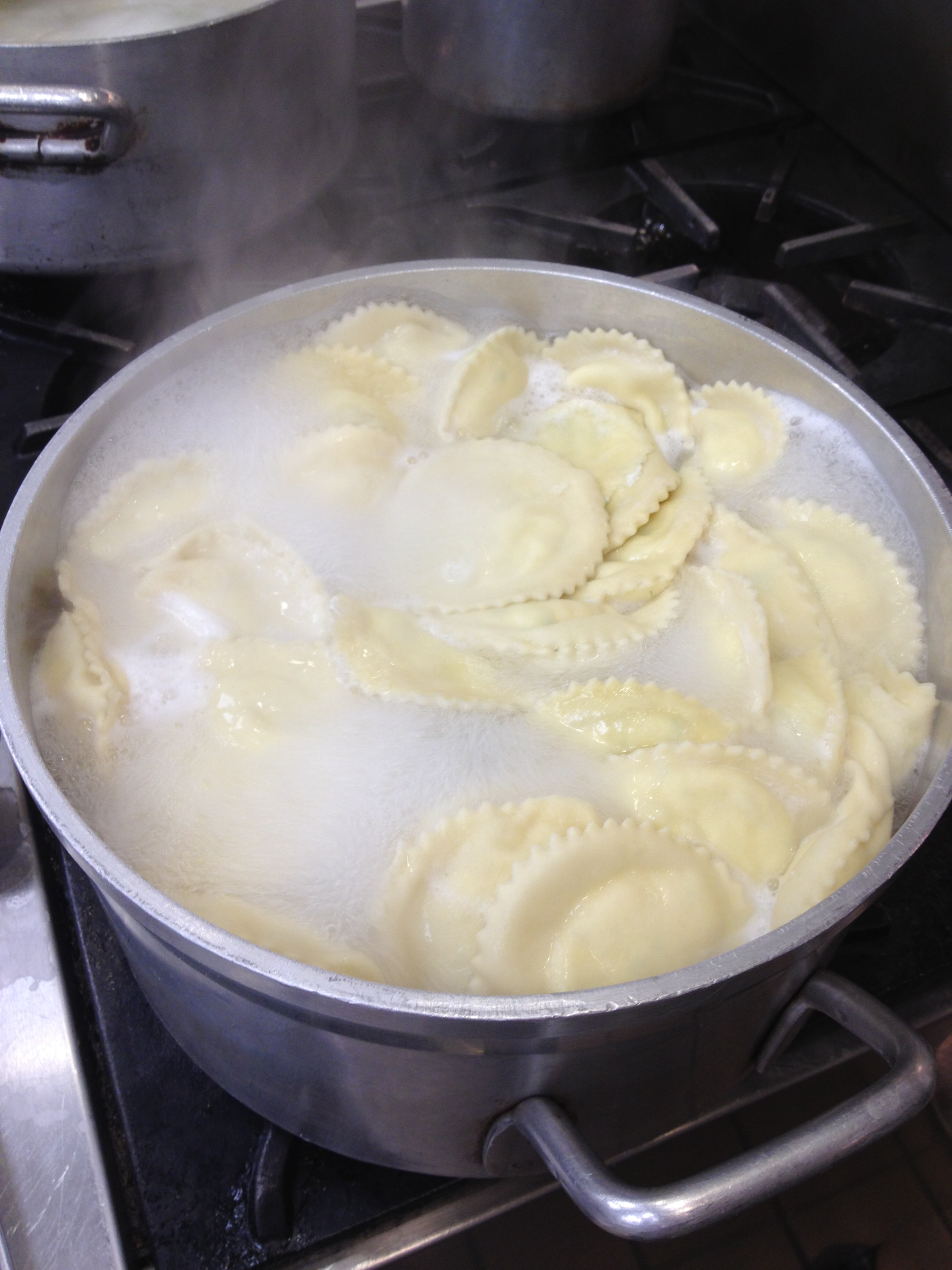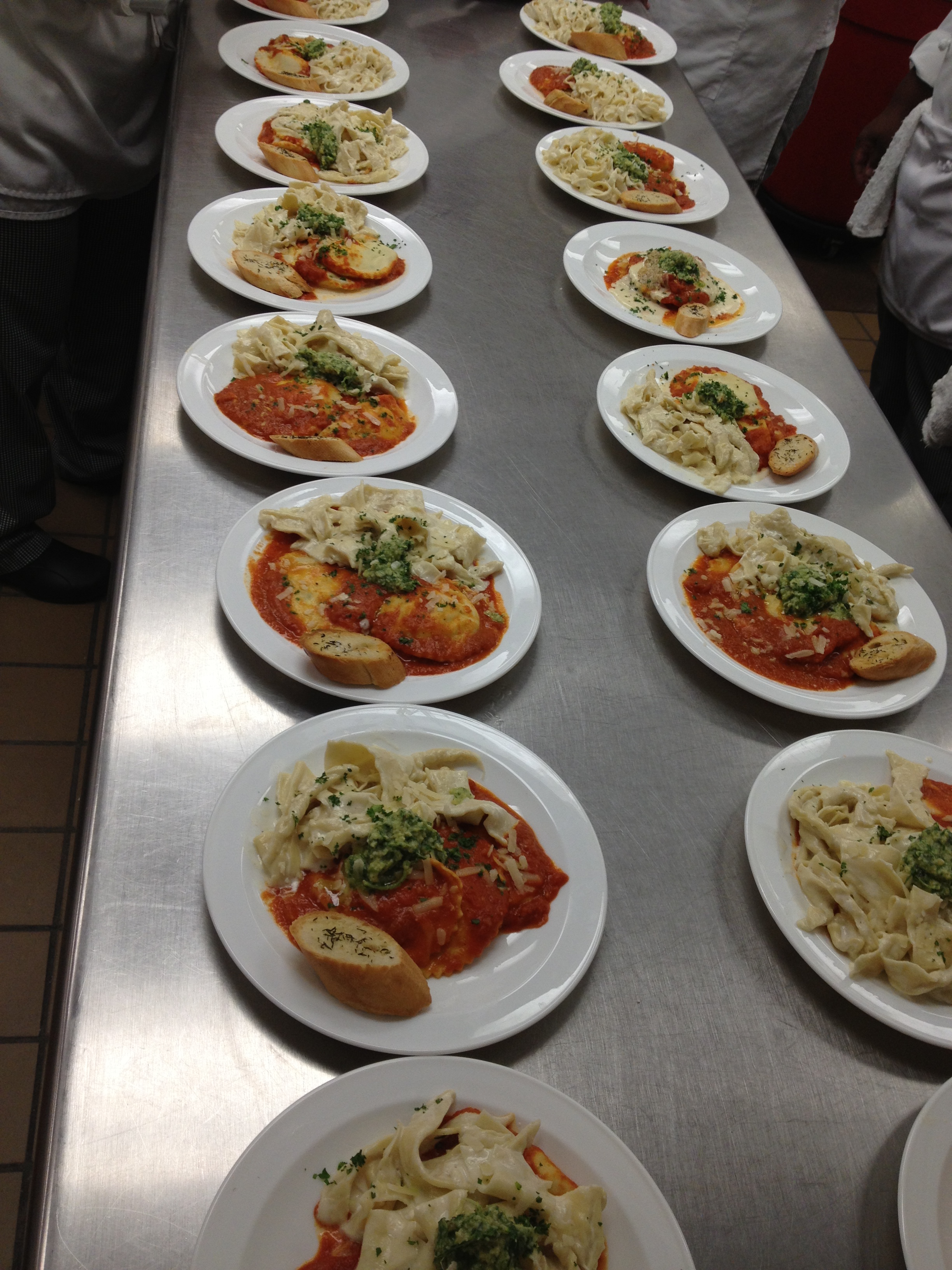one of my favorite parts of basic food prep class was learning to make fresh egg pasta. it is not a difficult process, but it does have many steps and requires lots of time. the advantage of dry factory pasta is the limited time and effort it takes to make, but it also has a different texture than fresh egg pasta. italian cooks actually use fresh and dried pasta in different ways and with different recipes – dried pasta is better for light, oil-based sauces, while fresh homemade pasta is better with rich cream or butter-based sauces.
i think that everyone should experience the tender, delicate texture of homemade pasta at some point, as it truly is an experience for the palate. when i tasted the pasta we made in class, it brought me back to italy, eating homemade pasta with pesto on a cliffside restaurant over the mediterranean sea in vernazza. and who doesn’t want to be brought back to that?!
here is the recipe as i learned to make it from my culinary school chef in some words and a ton of pictures! at the end, you’ll see the “official” recipe, which came from Professional Cooking, the 7th edition by Wayne Gisslen. we didn’t follow it exactly, but if you’re the type of person who needs a complete recipe in front of you, you’ll have one to follow. if you’re wondering about the pasta machine, you can often find them at tj maxx or ross for a reasonable price, $15 – $20. i plan on purchasing one once i move into an apartment with a bigger kitchen and more storage space [that’ll be the day!]. this would be a great idea for date night or a dinner party because it’s fun and interesting and the perfect activity for more than one person. you can talk [and laugh!] as you do it. just be prepared to get messy!
1. Mound about 1 cup of flour on a clean, dry work surface, and create a well in the center. Crack two eggs inside and add a pinch of salt. [The book says to add olive oil, but we didn’t use olive oil in ours.]
2. Using a fork, carefully beat the eggs in the well…
…and continue to do so until they are thick and uniform.
3. Begin grabbing flour from the outside of the “flour bowl” and adding it to the egg well while continuing to beat.
As you gradually add the flour, the egg mixture in the well will thicken up even more and turn a lighter color.
4. Once it looks something like this…
…you can work in the rest of the flour bowl into the dough…
…until it forms a dough.
5. Begin to knead the dough, adding more flour as needed.
Work the dough using the palm of your hand…
…until it looks like this and feels firm to the touch:
6. Now that you have made a major mess of the counter, the floor, your hands, and probably the rest of your body…
…wrap up your dough tightly in plastic wrap and freeze. Apparently there’s something something about freezing the dough that makes it work really well when you go to roll it, according to Chef. We froze ours for a week, but a few hours would probably do the trick as well.
7. Refrigerate dough to thaw. Once dough is thawed, dust with flour. Set rollers of pasta machine to the widest opening, flatten the dough, and roll the dough through the machine.
Decrease the width of the rollers and pass the dough through the machine again. Continue to do this until dough is as thin as desired, dusting with flour as necessary.
8. This is the fun part – cut and shape your pasta however you want! Be creative! Take a look at the different kinds that we made:
Finally, boil the pasta and serve in whatever way suits you.
here’s the recipe from the book:
Fresh Egg Pasta
Yield: 1-1/2 lb.
Ingredients:
1 lb. Bread flour
5 Eggs
1/2 fl. oz. Olive oil
Pinch of salt
Procedure:
1. Mound the flour on a work surface. Make a well in the center and add the eggs, oil, and salt.
2. Working from the center outward, gradually mix the flour into the eggs to make a dough.
3. When it is firm enough to knead, begin kneading the dough, incorporating more flour. If the dough is still sticky when all the flour is incorporated, add more flour, a little at a time. Knead well for at least 15 minutes.
4. Cover the dough and let it rest at least 30 minutes.
5. Cut the dough into 3 to 5 pieces. Set the rollers of a pasta machine at the widest opening. Pass the pieces of dough through the machine, folding them into thirds after each pass and dusting them lightly with flour to keep them from getting sticky. Continue passing each piece through the machine until it is smooth.
6. Working with one piece of dough at a time, decrease the width between the rollers one notch and pass the dough through them again. After each pass, turn the rollers one notch narrower, dust the dough with flour, and pass it through again. Continue until the dough is as thin as desired. The pasta is now ready to cut into desired shapes and to cook.
enjoy that delicious taste of italy!
xoxo

